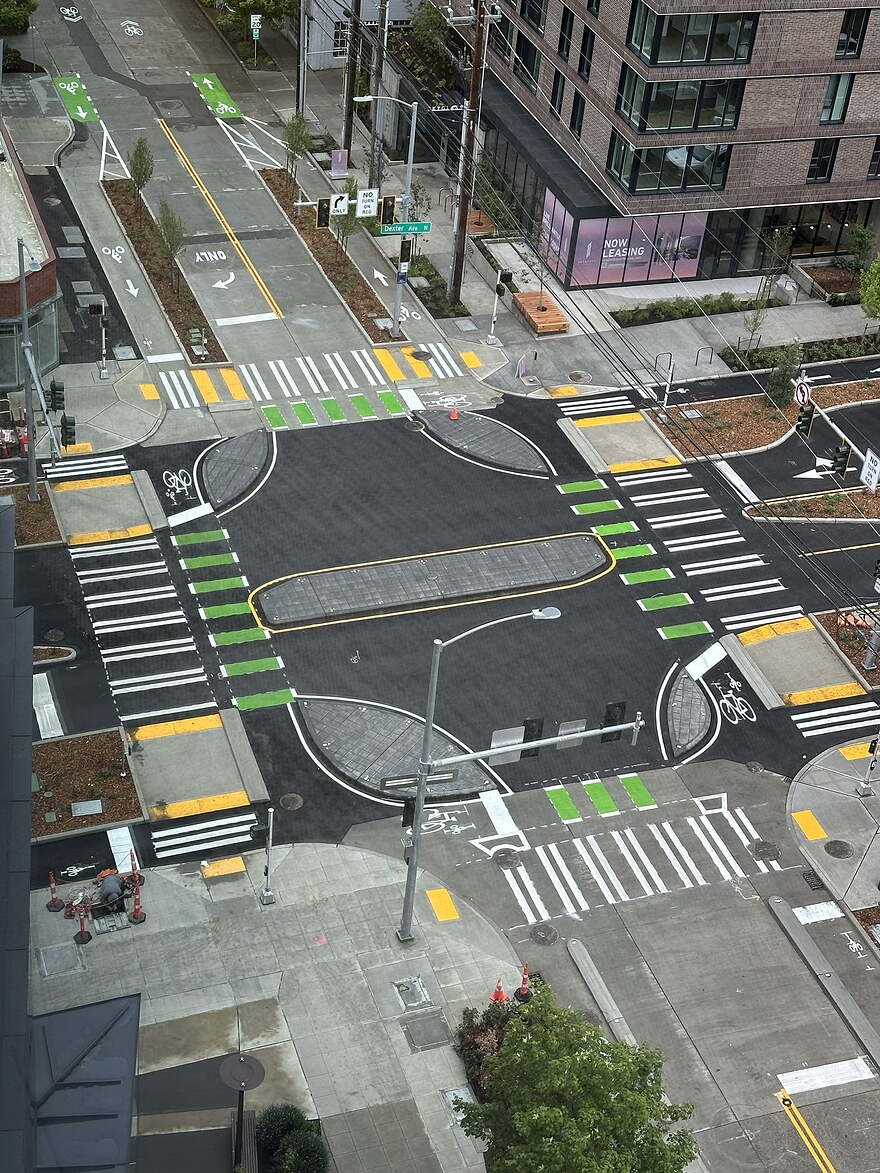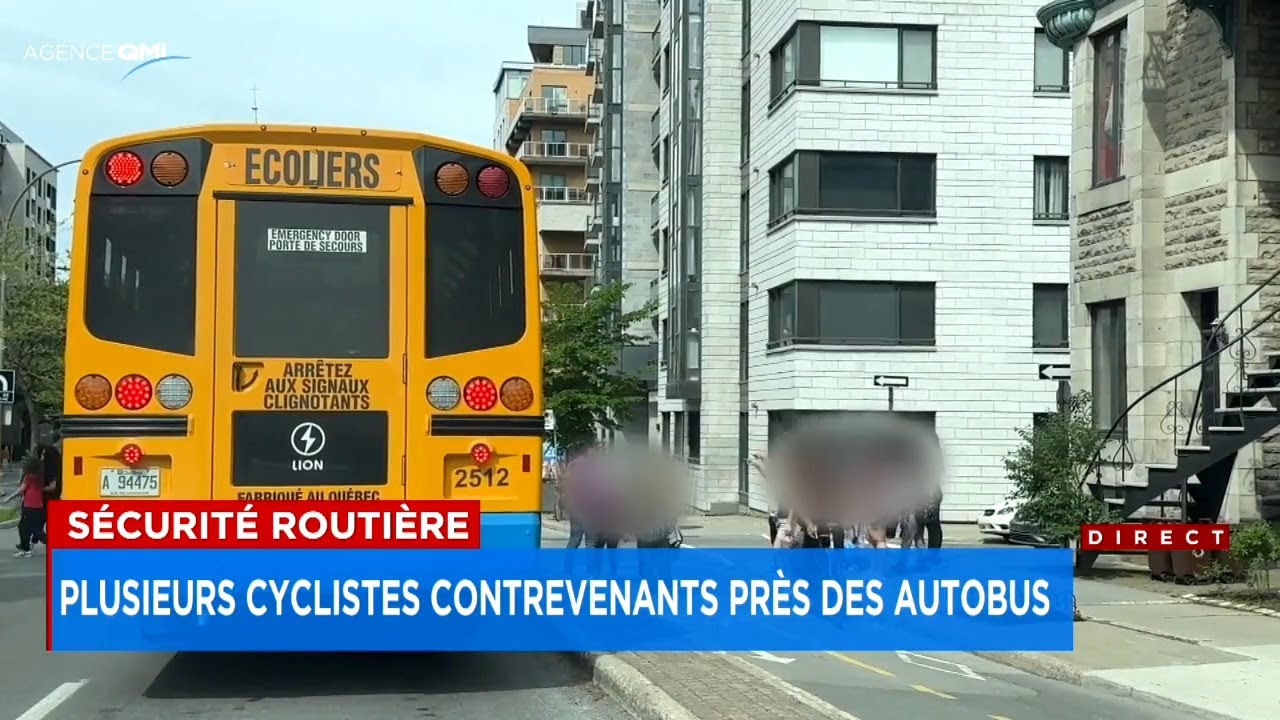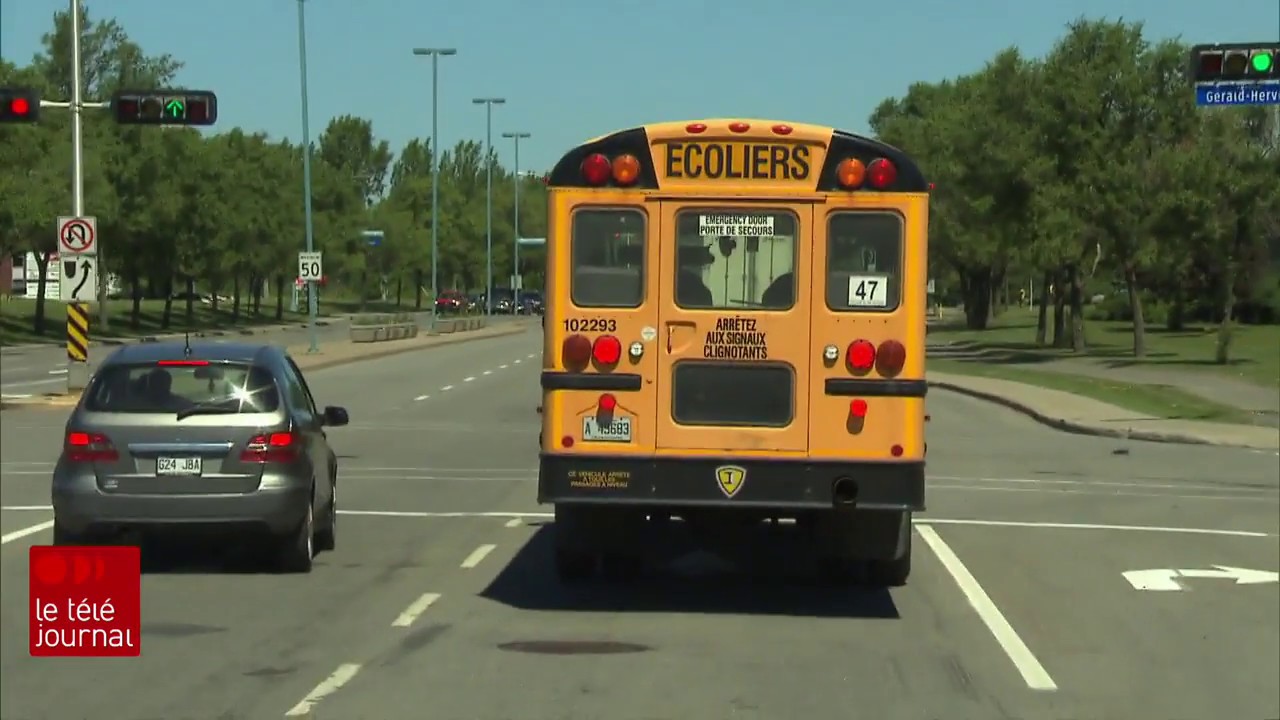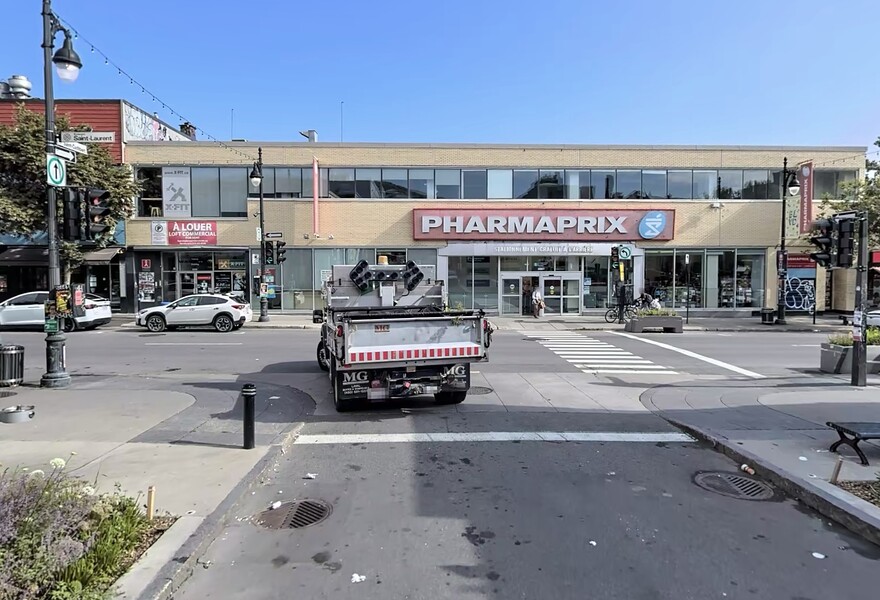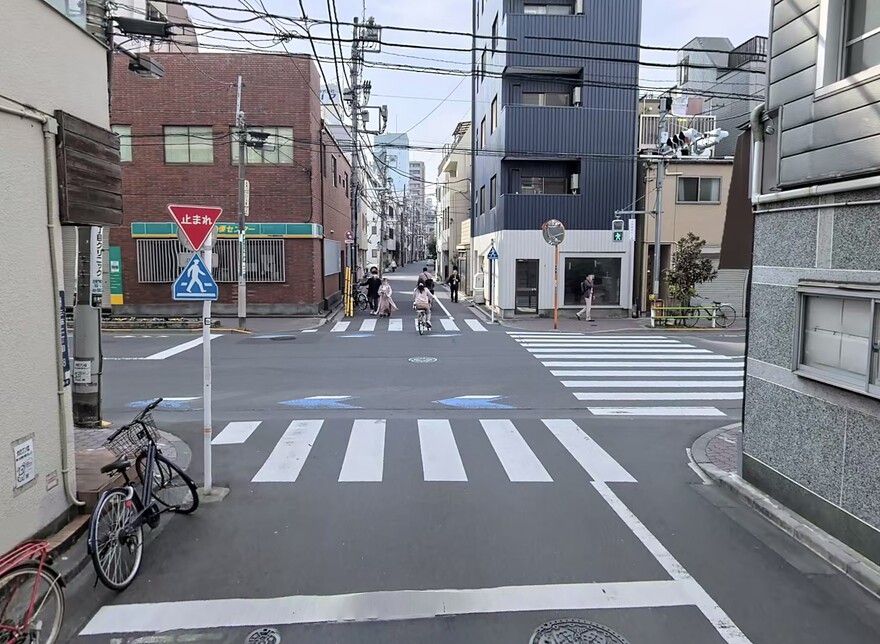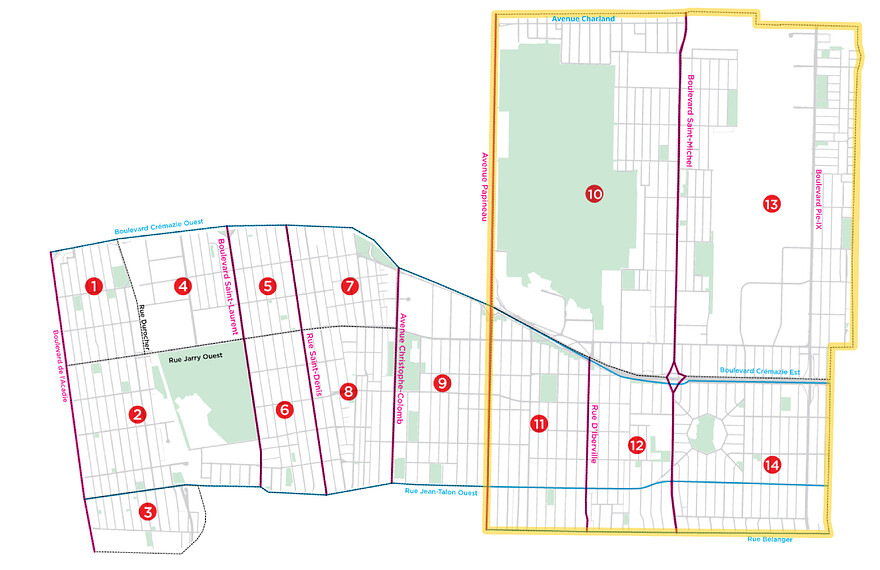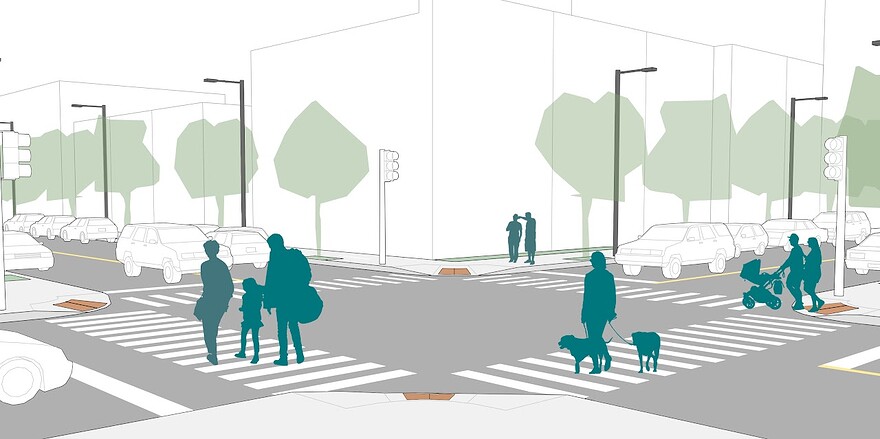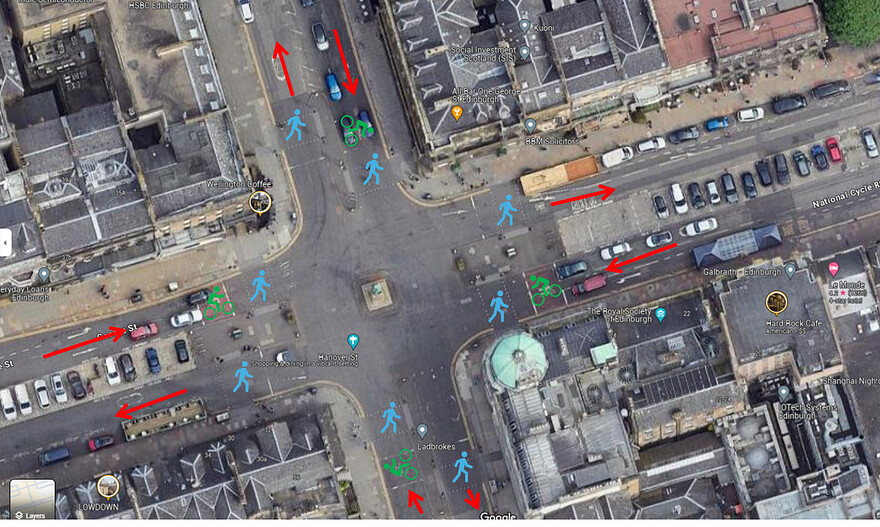5 messages ont été fusionnés à un sujet existant : Sécurisation de la rue De Verdun1
Première intersection protégée de Seattle
Il y a même un mail au milieu de l’intersection!
Seattle’s first protected intersection, viewed from above. Dexter Ave N @ Thomas St.
Source : x.com
Je veux le même reportage sensationnaliste de la part de TVA sur les automobilistes qui ne respectent pas le CSR par rapport aux autobus scolaires…
En fait Radio-Canada avait fait un reportage sur le sujet en 2019…
Dommage que le MTQ ne semble pas avoir donné suite au projet-pilote des caméras qui captent les infractions des automobilistes. Avec les données recueillies, l’estimation était de 30 000 infractions par jour au Québec!
Conduite automobile illégale près des autobus scolaires
Des dizaines de dépassements illégaux par jour, des automobilistes qui prennent des risques délibérés ou qui ignorent la loi : des caméras de surveillance installées sur des autobus scolaires partout au Québec prouvent que les contrevenants sont encore trop nombreux.
Le reportage de Marie-Laurence Delainey
Reportage de l’émission La facture en 2018
A school bus once stopped in the middle of Papineau, as they had to lower someone in a wheelchair and there were people parked along the edge of the street. In the area where they stopped, Papineau is 3 lanes wide one way, so cars were still passing even with the stop sign up. I was crossing and saw this, and decided to just stop the cars from going because the stop signs were up and they were all threatening the life of children that were crossing outside of the bus.
The fact I or anyone would have to stop to block traffic when it’s so clear in the rules that it’s not allowed, and there were cars that didn’t get any repercussions really upsets me
Un message a été fusionné à un sujet existant : Réaménagement des rues Rose-de-Lima et Sainte-Émilie
I think we should really look around the world at how their traffic engineering works because there are many things I think should be brought over.
Here’s one example:
In some places around the world, like Tokyo, intersections can have unique traffic control measures. For instance, I noticed an intersection in Tokyo that combines a pedestrian traffic light with a stop sign for cars. The type of intersection is similar to Rue St-Cuthbert and Boul. St-Laurent (which could receive this type of implementation if it was allowed)
Here’s how it works: Pedestrians wait for the light to turn green before crossing, ensuring they can cross safely without relying on cars to yield. Meanwhile, cars coming from a residential street face a stop sign before turning onto the larger street. These cars can turn without entering the crosswalk when it’s occupied by pedestrians. If both pedestrians and cars turning arrive at the same time, cars treat it like a stop sign, giving priority to pedestrians crossing.
From the POV of a civilian that knows nothing about traffic engineering but walks and drives all across the city, this feels like an idea that is good in theory, but not in practice. On one hand, we have cars that burn red lights and stop signs left and right while on the other hand, there are tons of pedestrians who like to play Frogger while cars have a green light.
It’s a good idea, but it relies on everyone being way more disciplined than they actually are.
Yeah I agree after using it for a bit, people are used to it and know it, but when I first saw it I thought a car was running through a red light. Also people in Japan are way more likely to follow pedestrian lights than in Quebec, so it probably wouldn’t work well in Montréal
In my view, designs that rely on user discipline are useless at best. There is a reason why speed limits are not being respected and why stop signs are rolled. New designs that attempt to provide a safer environment for vulnerable users yet rely on drivers to follow signage or lights fall into the same trap.
HAWK signals in the U.S. are a prime example. One can easily “forget” to stop resulting in a crash and possibly injuries/death.
We therefore need passive solutions, concrete medians, bollards, raised crossing. They’re also less expensive to maintain and are more reliable as they don’t require electricity.
Il y a une séance d’info le 12 juin sur le Plan d’apaisement de la circulation de VSP
Une première mouture du Plan d’apaisement de la circulation du secteur est de l’arrondissement de Villeray–Saint-Michel–Parc-Extension vient tout juste d’être finalisée et est dorénavant prête à être dévoilée à la communauté. L’Arrondissement convie donc les résidentes et les résidents des districts de Saint-Michel et de François-Perrault à une soirée d’information le mercredi 12 juin, dès 19 h, à la Maison du citoyen (7501, rue François-Perrault, salle 202).
I agree with everything you said. Yet, I keep thinking about how red lights are still quite respected from drivers in general, even if in theory they could ignore them just the same as making a proper stop at a stop sign. Does anyone have any insights as to why?
They genuinely feel like the one rule of the road that’s generally pretty well respected even if it is “user discipline” based.
![]()
![]()
Avoir une intersection est une condition indispensable pour l’installation d’un panneau d’arrêt selon les normes de signalisation routière
On a carrément des lumières qui ne sont pas à des intersections. Si c’est la bonne interprétation, il y a un problème dans les normes.
Rencontré sur place mercredi, un policier a lancé la suggestion d’interdire toute traverse à cet endroit, et de mettre des grilles au centre du boulevard Décarie pour empêcher les gens de le franchir à pied.
Comment tuer une rue commerciale: en empêchant les gens de se déplacer dedans.
This is the same people that manually control lights to speed up car’s travel to the suburbs and make local transit travel and pedestrian/bike travel worse. Why are we looking at SPVM for advice about this?
A stop sign doesn’t change state. It tells you that you need to stop and go. That means you can eventually decide to go on your own.
A traffic light has a state. You are used to wait for green before going. If you go through the red, you are violating what your brain is used to do and you feel stupid.
Some people “edge” red lights as in flooring the gas pedal when the light is yellow. That would be the only issue I have with users not using lights correctly.
I think the reason why people usually respect stop lights is because of the immediate danger associated with them. A driver knows there is a good chance they’ll get t-boned if they don’t stop. They would thus directly suffer the consequences of their actions. As opposed to speeding, a red light is a direct danger whereas the consequences of speeding can only be seen on the long term. This is only a hypothesis tho, if someone has some info or research about this traffic psychology I’d like to know more.
le Service d’urbanisme et de mobilité de la Ville a publié une liste de vérification d’accessibilité universelle pour les aménagements
This is really a bad design… the tactile edge aims visually impaired people to walk into the middle of the intersection and not towards the actual crosswalks
Aussi, la traverse rapproche inutilement les piéton·nes des véhicules en mouvement sur l’intersection et réduit la distance de réaction des automobilistes quand ils font un virage à droite. Leur angle mort est d’ailleurs plus large au croisement avec la traverse parce que la voiture y est carrément parallèle.
J’ai remarqué lors de mon voyage en Écosse l’an dernier que les descentes de trottoirs étaient à au moins 5 mètres de l’intersection. Ça rend les piétons bcp + visibles!
Pour des grands boulevards, il y a souvent un îlot au milieu, et le piéton ne traverse pas en ligne droite
Et il y a souvent des sas vélo même s’il n’y a pas de piste cyclables
Exemple : Intersection des rues George et Hanover dans New Town à Édimbourg
J’ai mis des cyclistes sur les sas… et les sens de circulation en rouge (on roule à gauche en Écosse!)
Je me demande pourquoi ici, on fait des descentes de trottoir au coin… Quand c’est pas bien aligné, on peut aller tout droit dans la voie de circulation automobile
